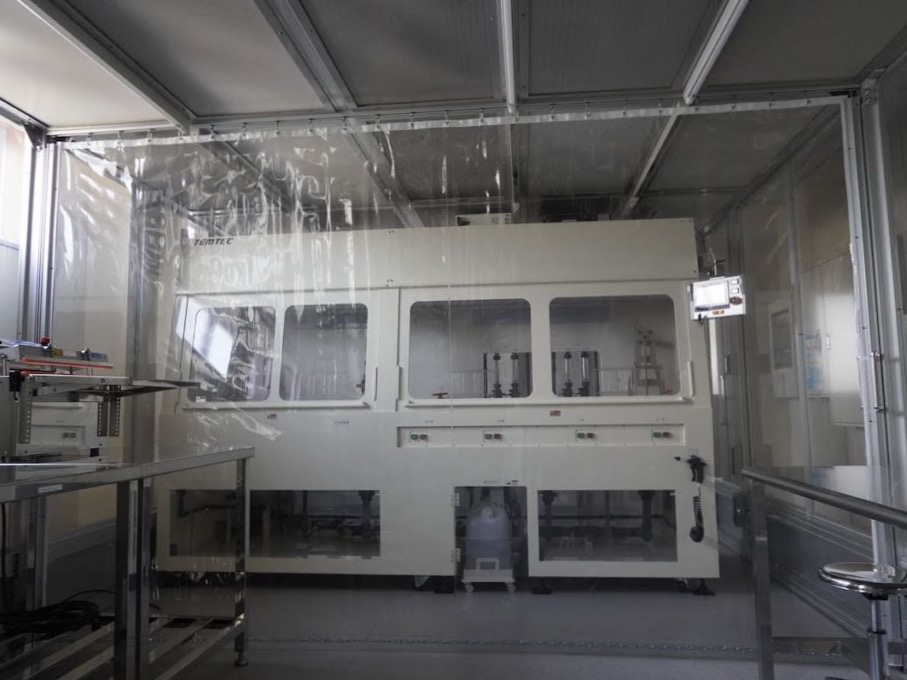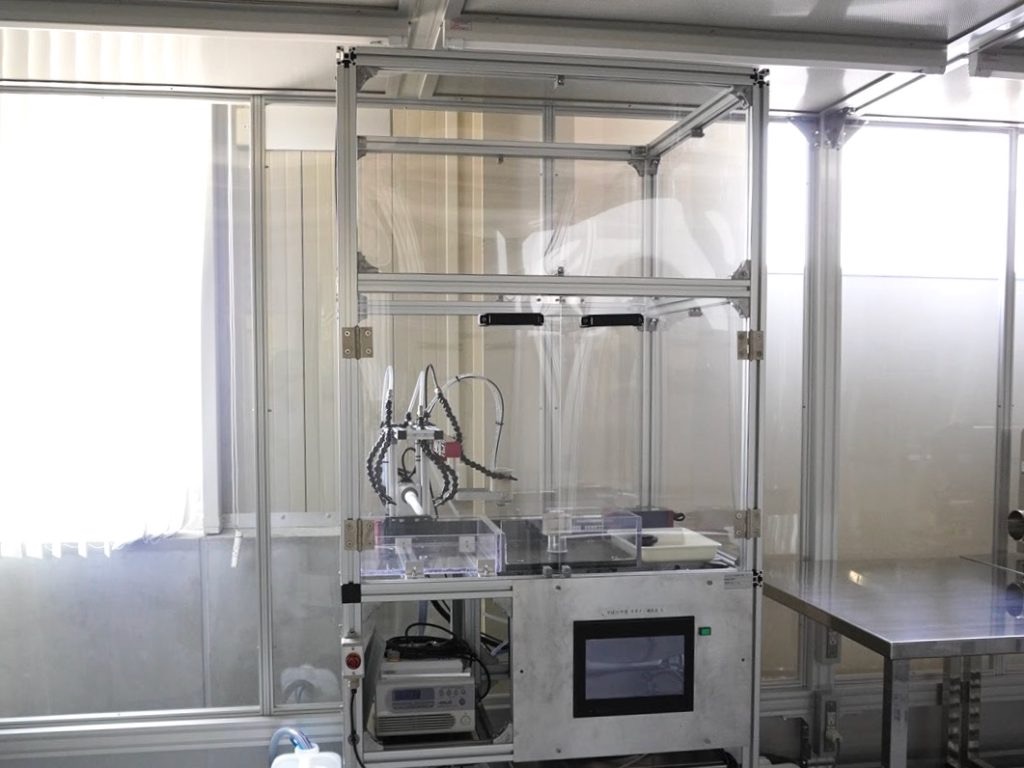
Wafer Cleaning Equipment
A wafer is obtained by processing crystals of a semiconductor material such as silicon (Si) into thin disks and is to be used as a substrate material for semiconductor components. This page provides you with what wafer cleaning equipment is and what types of cleaning equipment TDC has in operation.
Contents
Wafer Cleaning Equipment
Wafer cleaning equipment is the equipment that performs cleaning and drying for the purpose of removing contaminants and foreign substances adhering to a wafer from its surface.
The Importance of Wafer Cleaning
It requires multiple steps to manufacture semiconductor wafers. At each step, the wafer takes on contaminants and foreign substances adhering to it. This contamination substantially affects the quality of resultant semiconductors. The wafer-cleaning step is considered to account for around 30% of the whole manufacturing procedure. This step is therefore an extremely important step that affects the productivity depending on how high the rate of contamination removal is. That is, it is safe to say that enhancing the quality of wafer cleaning in semiconductor production leads to advancement of the semiconductor technology and performance.
Contamination to Be Removed by Wafer Cleaning
The following lists the main types of contaminants and adhering foreign substances that are removed by wafer cleaning.
Pure dirt and dust:
When a wafer is unpacked, dirt and dust called “particles” that have entered the factory along with the outside air adhere to it. The sizes of these particles are from 0.1 to several microns.
Metallic contamination:
This refers to vaporized sodium molecules, a minute amount of heavy-metal atoms contained in a chemical solution being used inside the factory, and other similar metallic substances.
Organic contamination:
This refers to carbon contained in human dandruff or grime, a minute amount of carbon molecules in a chemical solution being used inside the factory, and other similar organic substances. Bacteria hiding in pure-water piping are also an example of organic contamination.
Fat and oil:
This refers to the oil content contained in human sweat or the like
Natural oxide film:
An oxide film having a thickness of 10 to 20 nm (1 to 2 mm/100,000) is generated as a result of the combination of the surface of a wafer with oxygen in the atmosphere when the wafer is exposed to the atmosphere. This oxide film contains impurities carried in the atmosphere and is therefore regarded as an example of contamination.
Cleaning Methods Employed in Wafer Cleaning Equipment
While the word “wafer cleaning” may sound simple, there are various cleaning methods. The following introduces you to several representative cleaning methods.
Wet cleaning and wet station
Wet cleaning is a highly usable and consequently mainstream wafer cleaning method because water is used as a medium. A multiple-tank-type wet station is the cleaning equipment built for high productivity. Including chemical solution tanks and pure water tanks arranged side by side, this type of wet station is capable of cleaning and drying groups of wafers together at one time. In contrast, a one-bath wet station is the equipment that uses one tank both for chemical solution cleaning and for pure water cleaning.
Batch cleaning
Cleaning equipment that can clean a large number of wafers at one time, as in the case of a wet station, is called “batch cleaning equipment.” While being advantageous in that the processing cost per wafer is low, batch cleaning equipment is disadvantageous in that contamination removed in cleaning adheres wafers again because the same batch of chemical solution is repeatedly used.
Single wafer cleaning
In contrast to batch cleaning, equipment that cleans wafers one by one is called “single wafer cleaning equipment” and is suited to manufacturing where a large variety of semiconductor products are produced in small quantities. The most popular example of single wafer cleaning equipment is a “spin processor,” which cleans a wafer by spraying a chemical solution and pure water while rotating the wafer. This equipment allows the use of various chemical solutions as in the case of a wet station, thus being used for various purposes.
Dry cleaning
In contrast to “wet cleaning” described above, which uses chemicals, “dry cleaning” uses gas for cleaning. This cleaning uses almost no chemical solution, and therefore have advantages that it is greener than wet cleaning and that it can be employed without concern for possible damage on microstructures due to the surface tension of a chemical solution.
Wafer Cleaning Equipment at TDC
TDC has the following wafer cleaning equipment in house.
| Temtec | Wafer Cleaning System | 1 | Single wafer cleaning |
| In-house | Wafer Cleaning System | 1 | Batch wafer cleaning |


Feel free to contact TDC for wafer cleaning services.
TDC offers precision cleaning according to specifications. Please feel free to contact us.
